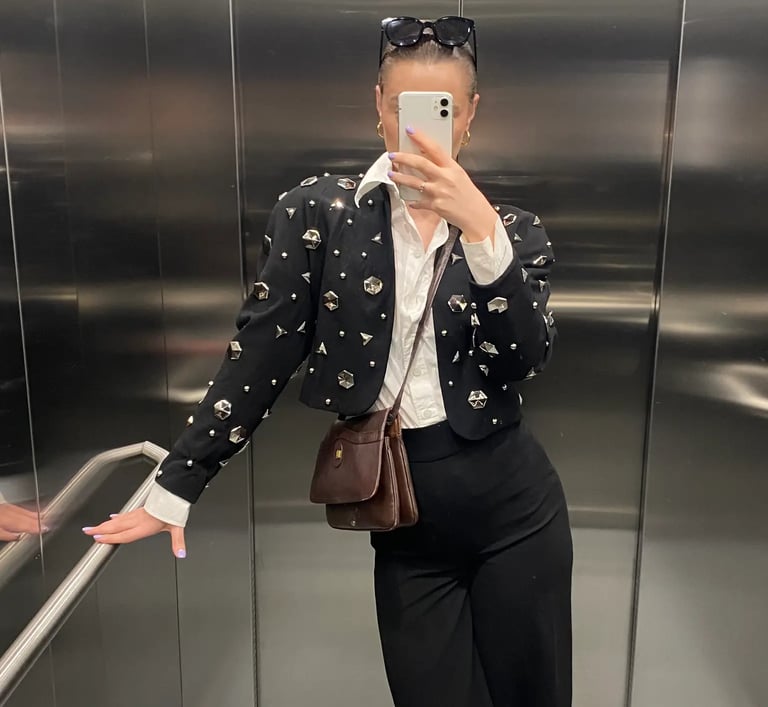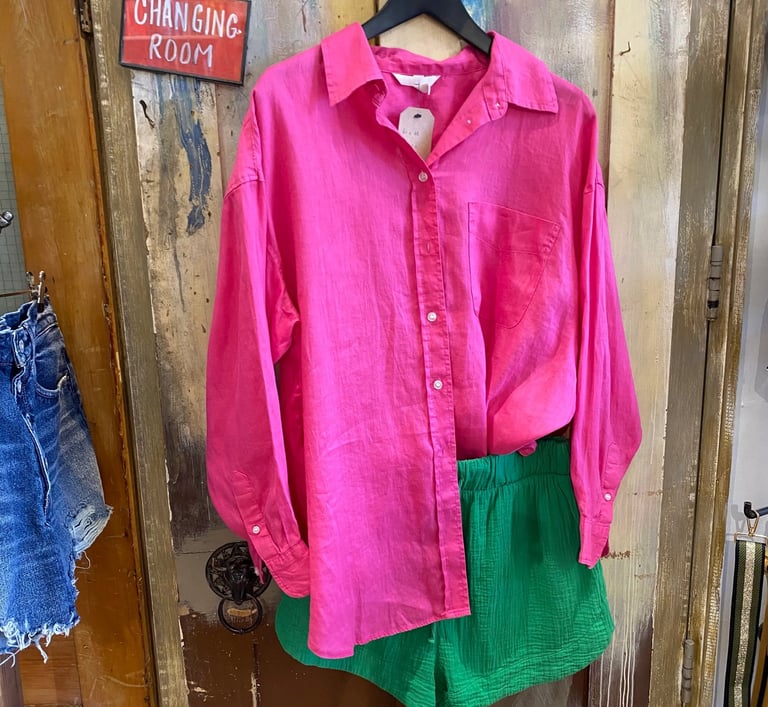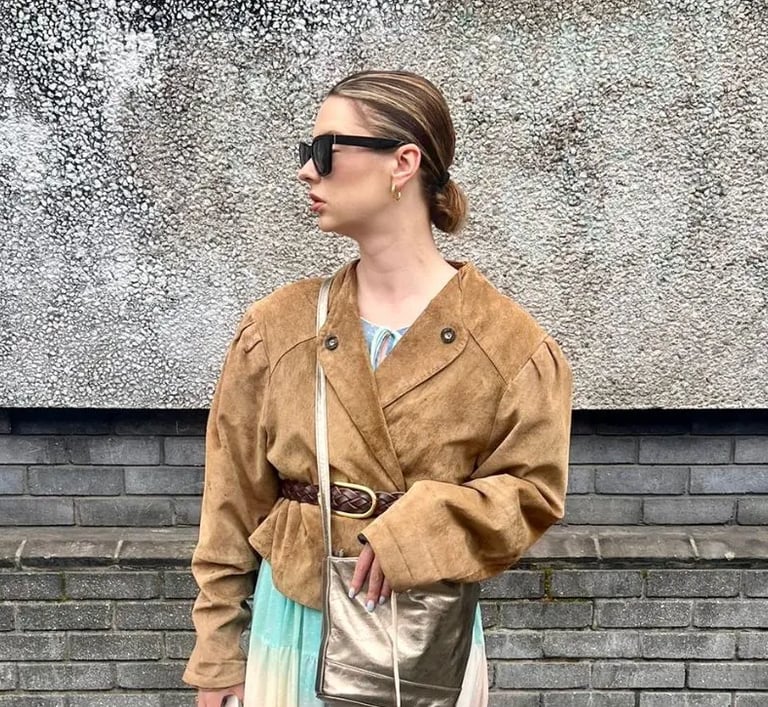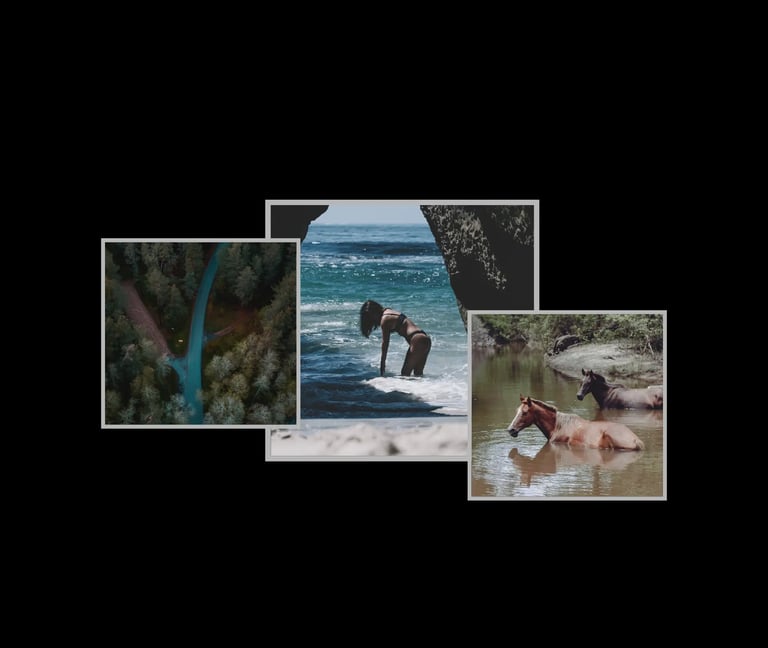Less, Better, Real: Laura’s Refreshingly Honest Take on Sustainable Fashion
PEOPLE & STORIES
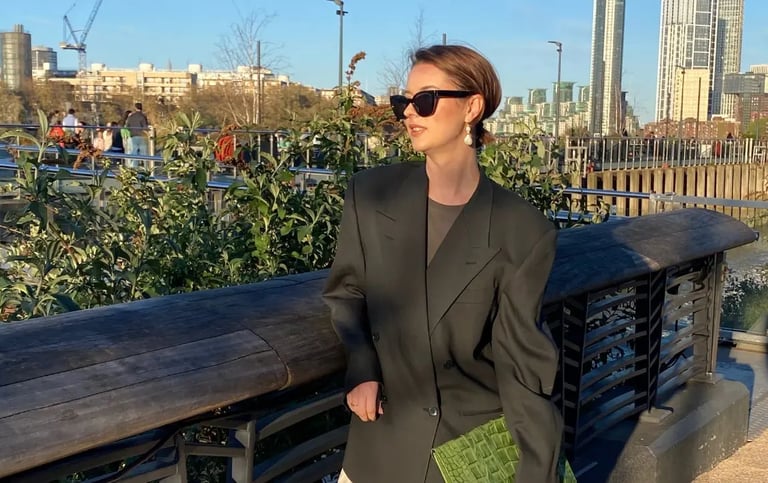

Name: Laura Hepples
Title/Profession: Slow Fashion Creator
Based in: United Kingdom
Instagram: @lauracurates
Known for: Laura is known for promoting slow fashion through thrifting, intentional dressing, and sharing her personal journey from fast fashion to conscious living.
1. Can you tell us about your personal journey into slow fashion? Was there a turning point that sparked your shift away from fast fashion?
Yes, there was a very distinct turning point. I used to be that fast fashion girl—Zara was my kryptonite—and I would be shopping for a new outfit ahead of every social event. The shift happened quite suddenly for me. One moment, I was working every hour under the sun (and moon) in a corporate job, and my idea of recharging was partying in Ibiza (in an H&M leopard print swimsuit). The next, I was floored with stress and burnout. I was numb, empty, and unable to function. My body quite literally forced me to stop. It told me: everything needs to change. Slow down. That was the turning point.
From rock bottom, I rebuilt myself with a new perspective, a deep appreciation of health, our environment, and the need for a slower, more sustainable pace. My love for fashion continued, but how I consumed it changed. In that very moment, my slow fashion journey began.
2. Charity shops and thrifting require a certain kind of creative eye. How do you approach the hunt—any rituals, tips, or mindsets that guide you?
This is a tough one—I go into auto hunter-gatherer mode these days. The biggest tip, to stay focused in an environment that can be quite overwhelming, is preparation:
– I assess my existing wardrobe and create a wishlist.
– What do I love that I already own? Colours, shapes, brands that work.
– Figure out wardrobe gaps.
– Write a wishlist—this becomes my hit list.
Whilst out in the thrifty wild:
– Shop in affluent areas. Whose hand-me-downs are you in the market for?
– Reframe “good value.” Buy what you can afford versus pure bargain hunting. Good quality items might be priced higher, but they’ll be a fraction of the original price and last much longer. Buy less, buy better.
– Beginners: start at curated stores.
– Most important: don’t go on an empty stomach. Fuel up—it’s a marathon, not a sprint.
3. What does “sustainable style” mean to you personally, and how do you define it beyond just the materials or brands involved?
For me, it’s a mindset—being conscious and present in decisions. Thinking twice. It means dressing in a way that is true to me, and with long-term intention. Multiple ways to wear, and across many seasons.
Trends will always come and go, but figuring out what items and outfits feel authentically you means those items will naturally stick around for longer.
I have old Zara and Primark items in my wardrobe—if they still work for me, my style, my lifestyle, then I won’t ditch them just because they’re fast fashion. I’ll continue to wear them with pride and maximise their lifespan. That’s part of the slow fashion journey.
4. Are there any sustainable brands or products you swear by that you recommend to your followers?
Honestly, I’m finding it difficult to navigate new sustainable brands, and so I don’t feel I’m ready—or equipped—to recommend them just yet. I’m educating myself daily on new brands and I’m so grateful for platforms such as Thrive Century to learn more about brands without the risk of greenwashing.
Pre-loved resellers I recommend, and would shout my love for from the rooftops, are: curate&rotate, sourced studio, and The 2nd Look. I eagerly await their new drops.
5. There’s been a surge in popularity around thrifting and secondhand fashion. What do you think is driving that—and where do you see it going?
I think the increasing awareness—largely thanks to social media—of the negative impact on our planet of fast fashion, combined with the gradual rise of curated charity shops (Mary Portas has been leading the way since 2009!) and gorgeous independent reseller businesses, mean that secondhand fashion is not only a solution to a huge problem, but it’s cool, enjoyable, and accessible too.
I can only see it growing further. It has to. I genuinely think society will look back on the fast fashion era as a filthy habit, thinking, “Wow—I can’t believe we did that.”
6. Has social media played a role in your slow fashion advocacy or visibility? What are the upsides and challenges?
Yes! It’s made a huge difference. I learn every day from other creators, and my Instagram feed is full of inspiring people. It helps keep me accountable. It’s that “stronger together” mentality—which is needed sometimes.
Rewriting decade-long overconsumption habits would have taken much longer alone. I now have a small (but mighty!) voice in the space, and I hope I can support and inspire others on their journey too.
Today, the upsides far outweigh the challenges. The community is so supportive and the space is informative and inspiring.
The challenges are more personal—dealing with guilt after an imperfect or impulsive purchase, for fear of being seen as weak or inauthentic.
7. What role do you believe fashion and lifestyle influencers play in shaping sustainable consumer habits?
The role of influencers in this conversation is critical. I don’t think the mainstream narrative can change without them. In today’s society, people trust people—many will act on their recommendations and aspire to their looks and behaviours.
The influencer gave us the Zara haul—now it’s time for them to take the lead and write the next chapter.
8. Where do you go to reconnect—with yourself, the planet, or your creativity?
I feel most connected to our beautiful planet next to the sea, or watching a sunset… but as a Londoner, those things aren’t always accessible. Being near water brings me an instant feeling of calm—a riverside stroll along the Thames, or grabbing a coffee by Barnes duck pond is my happy place whilst in London. I like to escape to the countryside every now and then too.
To recharge creatively, I visit art galleries, I try new restaurants (I’m a real foodie), and watch old Audrey Hepburn films.
Travel brings me the greatest source of creative inspiration—different cultures, tastes, architecture. Unexpected colour combinations seem to spark my creative brain the most.
9. What advice would you give to someone just starting out on their slow fashion journey?
Educate yourself on the topic. Surround yourself—and your social media—with people who inspire you and who have been on that journey too. Unfollow influencers who don’t align with your slow fashion values. Remove temptation.
And most importantly: go easy on yourself.
10. And finally, what does dressing with intention mean to you?
For me, it means aligning my inner self with my external expression—my morals, values, mood, and personality. Authenticity and good intention from the inside, out.
